Winds of change from the White House are tearing down forecasts made just months ago. Assessments of the tariff-hit global economy are keeping CEOs up at night. Who, apart from Trump, Navarro and Bessent, cheers for higher taxes?
The sudden, dramatic rise in trading frictions in global goods is upending supply chains. Ford (US:F), the US automaker, is anticipating a profit loss of $1.5 billion this year due to tariffs. Extrapolating this trend to all industries and across continents, the sum is eye-wateringly high. Some predict a loss of 1 percent of the global GDP. Macro headwinds are blowing hard.
In these special and unprecedented times, we’ve been producing regular macro updates to keep you abreast of the economic and market developments. Below you will find nuggets of market insights on macro instruments and actionable investment themes.
Global Macro Markets
To the surprise of many, a large number of US stocks have erased their post “Liberation Day” tariff losses. Major US equity indices are now sitting at the underside of their previous trading ranges. Look at the S&P 500 Index (below). As soon as Trump announced a 90-day pause on higher tariffs, the SPDR index ETF surged above 520. Stocks like Microstrategy (MSTR), Palantir (PLTR) and Netflix (NFLX) have put on a stunning recovery rally. Markets are rewarding those who braved the Trump tariff chaos and held with gains north of 30 percent. MSTR, the Bitcoin darling, rocketed 65 percent from its April lows. Impressive stuff indeed.
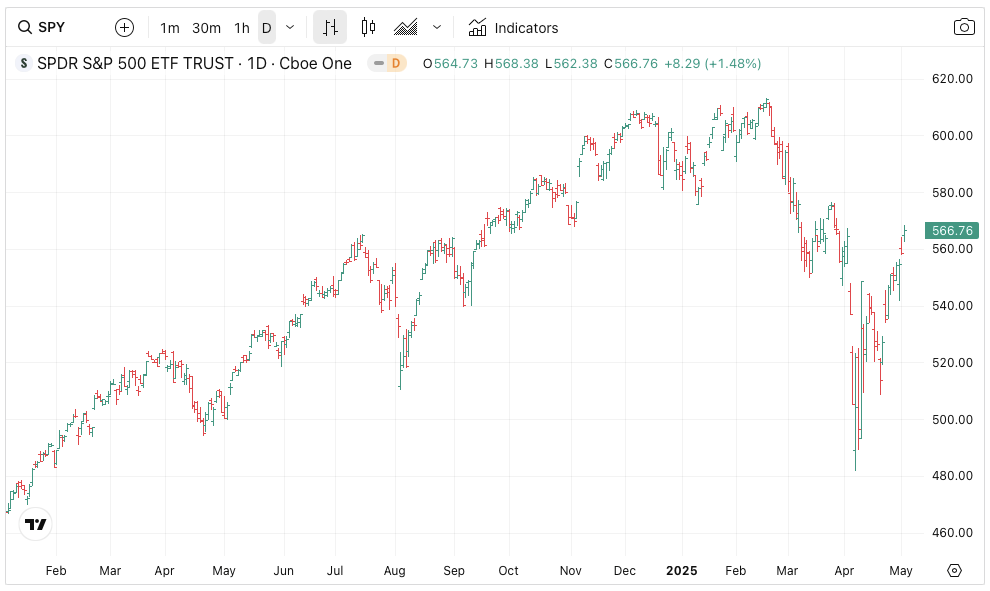
But that’s only one side – the more volatile side – of the financial market. Turning to the relatively boring areas like bonds, the outlook there is certainly dimmer.
US Treasuries, particularly longer maturities, have continued to stay downbeat despite the ongoing rebound in US equities. This means that US interest rates, which move inversely to bond prices, are staying elevated. “Higher for longer” is not merely a slogan anymore; it is becoming a reality.
Take the iShares 20-year Treasury Bond ETF (TLT, factsheet). At 87.7, the $46 billion fund is now a massive 13 points below its September highs. Treasuries should have benefitted from the April tariff turmoil, as it had done in the past. Generations of investors were trained by the equation “risk off, buy bonds”.
Not this time. Past economic relationships, unlike physics frameworks, can alter once their supporting assumptions crumble. The new macro catalyst that ushered an alternative reality was Trump’s tariffs. Not all nations will take US tariffs lying down. Some countries, under domestic political pressure, will retaliate. Herein lies the danger of “tit-for-tat” tariff war. Last I checked, US exports to China face a tariff rate of 125 percent. And they’re not on talking terms (yet).
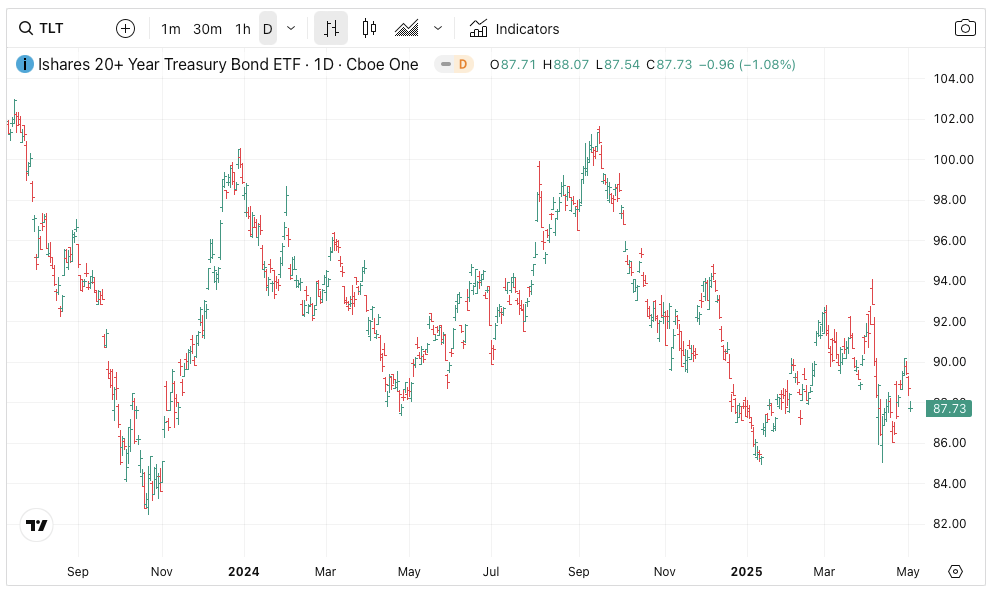
What is more troubling is that even the mighty US dollar is crushed by the immense selling pressure last month. Gone are the days when US assets behaved like safe havens. These days, investors certainly trust gold and the Swiss franc much more than US Treasuries and USD. The Dollar Index has dropped by more than 10 points year-to-date (see below). With fiscal threats arising rapidly, many veteran investors are realising the danger of US credits.
In his recent (and certainly last) shareholder meeting of Berkshire Hathaway (BRK.A), Warren Buffett simply warned: “We would not really invest in a currency that is going to ‘hell’.” The festering problem at the back of everyone’s mind is the unsustainable US debt. Last year, US federal debt interest payments alone topped $880 billion.
The bottom line is this: as US stocks slowly recoup their April losses, the US dollar is depreciating. Foreign investors in US assets are feeling the pain.
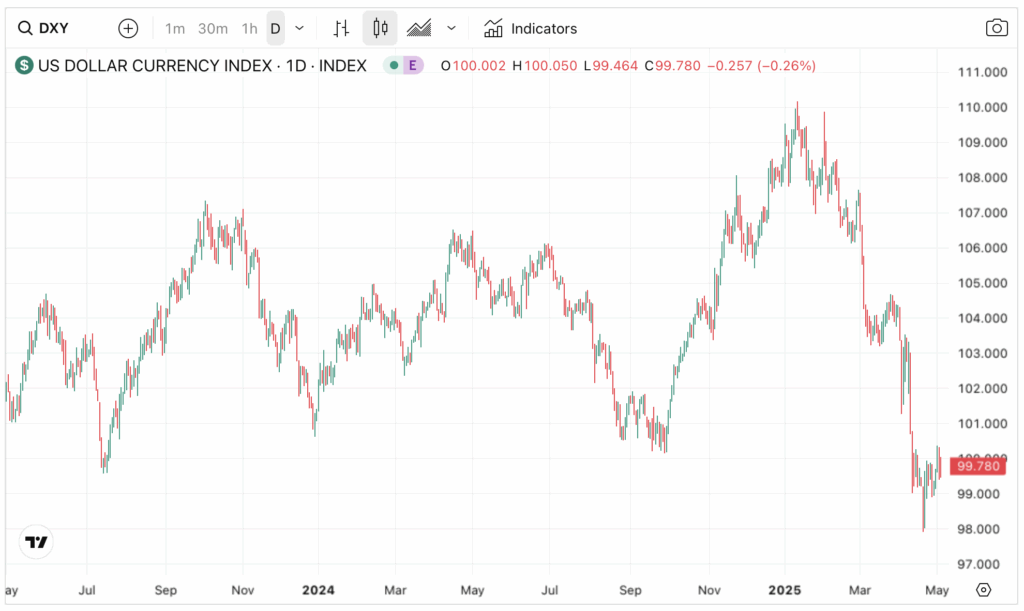
Warren Buffett will Retire in 2025
The biggest shock that happened last week was the retirement of the legendary investor Warren Buffett. The “Oracle of Omaha” is leaving the stage at a career high (see below). Each Berkshire share, as of 2 May, fetches a market value of $809,350 – its highest level ever. A fun fact for you: each Berkshire share is worth more than double England’s average house price. Chart-wise, the stock has been accelerating upwards since 2022, reaping huge rewards for Berkshire’s patient shareholders.
Of course, Warren Buffett leaves a big hole for his successor to fill. Already, investors are debating whether the next Berkshire CEO (Greg Abel) can perform as well as Buffett/Munger. This is an open question for which only time will tell. Management uncertainties may temper the rally.
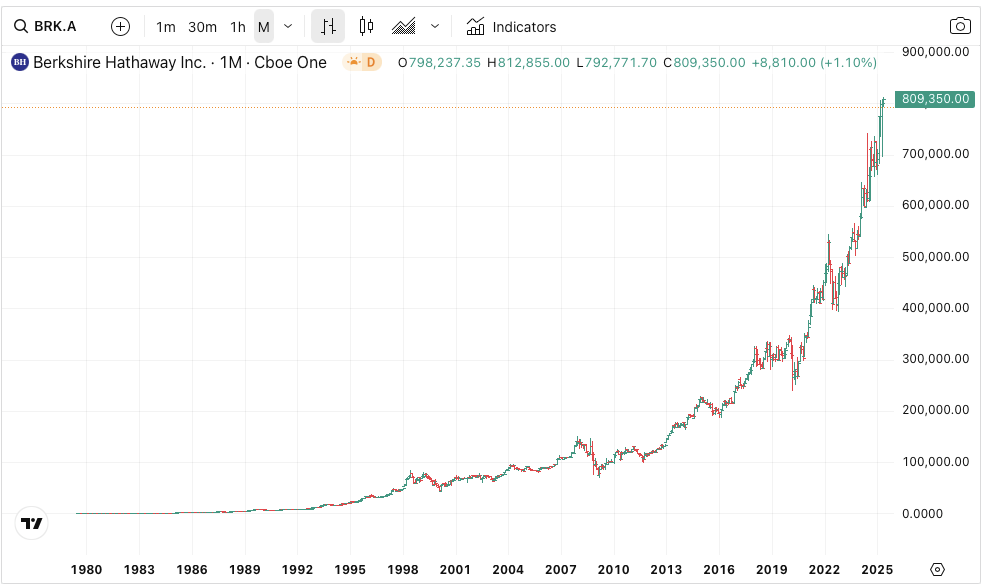
Tech Rebounds Sharply, But…
For tech investors, however, the post-tariff turmoil appeared to have subsided. Prices of most major tech companies have rebounded sharply in the last 10 sessions. Netflix (NFLX) soared to new highs last week. Microsoft (MSFT) gapped up on better-than-expected earnings and new all-time highs here are within grasp (see below). Even Apple (AAPL) is navigating the complex tariffs landscape reasonably well.
The point that is worth highlighting is this. When headlines are bearish and not confirmed with downward price action, the latter tends to prevail. It shows the bulls are not giving up (yet). Any time a tariff deal is announced the recovery in equities will only accelerate, especially in tech.
But, there are risks in chasing the sector higher. Trump may extend tariffs into the service sector. Look at the 100% tariffs proposal on films. Netflix immediately dropped on the news. Remember that the US technology sector runs a large surplus with the rest of the world, and may be caught in the crossfires of counter-tariffs hits.
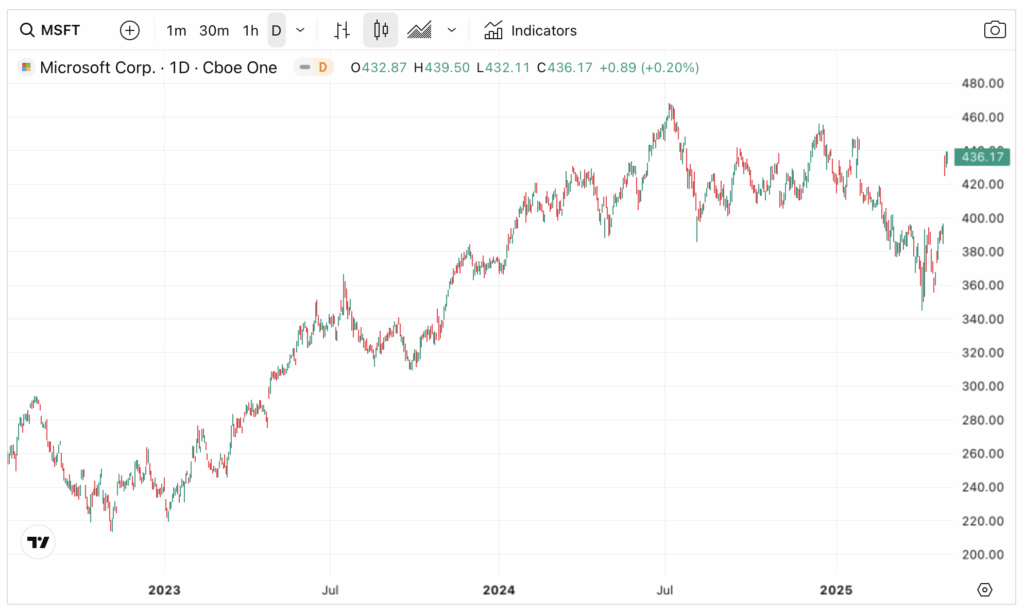
Energy Underperforms
For raw material sectors such as energy, however, the rebound is less intense. This is unsurprising – the price of oil recently broke down. Prices are trading below the long-term major support at $60 due to falling demand. This exerts considerable technical damage to the sector.
As a result, most oil majors are staying near their April lows. iShares Energy (ticker:XLE) is struggling to clear the overhead resistance at 83 (see below). As long as crude prices continue its slide, further relative underperformances of the sector are likely.


Jackson is a core part of the editorial team at GoodMoneyGuide.com.
With over 15 years of industry experience as a financial analyst, he brings a wealth of knowledge and expertise to our content and readers.
Previously, Jackson was the director of Stockcube Research as Head of Investors Intelligence. This pivotal role involved providing market timing advice and research to some of the world’s largest institutions and hedge funds.
Jackson brings a huge amount of expertise in areas as diverse as global macroeconomic investment strategy, statistical backtesting, asset allocation, and cross-asset research.
Jackson has a PhD in Finance from Durham University and has authored over 200 guides for GoodMoneyGuide.com.
To contact Jackson, please ask a question in our financial discussion forum.



